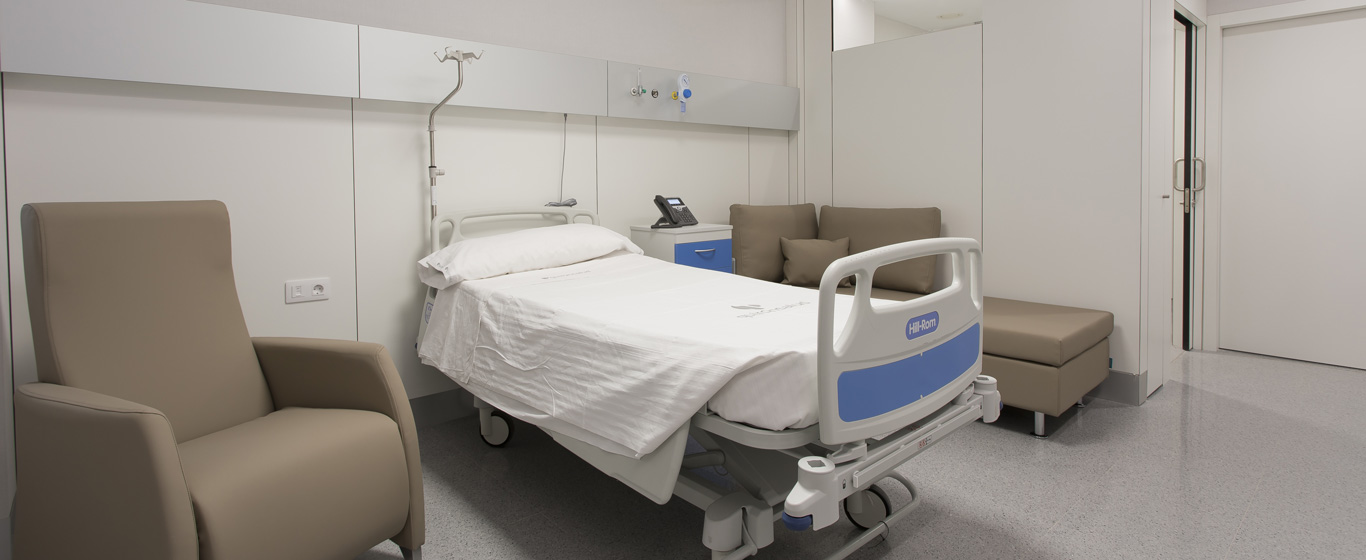Laryngoscopy
Laryngoscopy is the technique used to explore the larynx and vocal cords. The examination can be performed using mirrors and a light source or with a device called a laryngoscope, a rigid or flexible tube that includes lighting and a camera, which is inserted through the nose or mouth to the vocal cords.

General Description
Laryngoscopy is a procedure that allows visualization of the back of the throat, the larynx, and the vocal cords.
Depending on the technique used for exploration, there are two types of laryngoscopy:
- Indirect or reflective laryngoscopy: The examination is performed using a light source and a laryngeal mirror, a small circular mirror with a variable diameter that includes a thin metal handle.
- Direct laryngoscopy: A laryngoscope is used, an instrument shaped like an elongated tube with a light and camera at the end. The laryngoscope may be rigid (telelaryngoscopy) or flexible (fibroscopy).
When is it indicated?
Laryngoscopy allows for the detection and identification of various problems affecting the throat and larynx, such as inflammatory or infectious processes, obstructions, narrowing, polyps, or tumors, among others. It is the procedure of choice when a patient experiences any of the following symptoms:
- Sore throat.
- Difficulty swallowing.
- Difficulty expelling air through the throat or producing an abnormal sound when doing so (stridor).
- Voice problems, such as hoarseness or aphonia.
- Persistent bad breath.
- Prolonged cough.
- Coughing up blood.
- Persistent ear pain.
- Sensation of a foreign body in the throat.
Rigid laryngoscopy is also used as an interventional technique to extract a tissue sample (biopsy), a polyp, or a foreign body.
How is it performed?
In indirect laryngoscopy, a laryngeal mirror is introduced into the back of the oropharynx (the middle part of the throat, located behind the mouth). Light is directed onto the mirror, allowing visualization of the larynx and vocal cords on the mirror.
A procedure called microlaryngoscopy reflects combines the use of the mirror with an operating microscope, which provides direct light and magnified vision, offering greater precision in the examination.
In flexible laryngoscopy, a device called a fiberoptic endoscope is used, a long and thin instrument made of flexible optical fibers that includes a light source and a camera at the tip. The endoscope is introduced through the nose and moved through the larynx to the vocal cords. Once there, the patient is asked to produce different sounds or words to observe the behavior of the larynx and vocal cords during phonation. The images recorded are displayed in real-time on the associated monitor.
For rigid laryngoscopy, a telelaryngoscope is used, a rigid instrument that also incorporates a camera and lighting and is introduced through the mouth. This device offers higher definition and image quality, leading to a more precise diagnosis.
Risks
Any type of laryngoscopy carries a minimal risk of causing inflammation that could obstruct the airways. Nasal laryngoscopy, in particular, can cause bleeding in the nasal passages, while oral laryngoscopy may result in ulcers or injuries to the tongue, lips, or the inner lining of the mouth or throat. If any therapeutic procedure is performed during rigid laryngoscopy, possible complications include infection or bleeding, but these are rare.
What to expect from a laryngoscopy
Laryngoscopy is performed with the patient sitting. In the case of indirect laryngoscopy, the patient must open their mouth and extend their tongue as much as possible so the specialist can hold it with a tongue depressor (a plastic or wooden spatula-shaped tool) or with a sterile gauze before introducing the mirror. To prevent gagging, a topical anesthetic may be applied to the throat before the procedure. The anesthetic may have a bitter taste and create a sensation of throat swelling.
In direct laryngoscopy, the patient’s head is positioned forward, with the chin slightly tilted downward. Before beginning, nasal drops may be applied to remove nasal secretions, and a local anesthetic may be applied to the throat to prevent the gag reflex. While the laryngoscope is being introduced, the patient should breathe through their nose until the device reaches the targeted location. It is likely that the patient will feel discomfort, nausea, or the urge to cough.
The procedure typically lasts about 10 minutes. If local anesthesia has been used, the patient should not eat or drink until the effect wears off and normal swallowing reflexes return. The procedure is outpatient, and the patient can resume normal activities without the need for follow-up care.
If a biopsy or other treatment is performed during rigid laryngoscopy, general anesthesia is administered. After the procedure, which duration varies depending on the case, the patient must remain under observation for several hours until recovery. Sore throat or discomfort is common for one or two days following the procedure, along with possible hoarseness, noisy breathing, or blood-tinged cough. In such cases, it is recommended to speak as little as possible, avoid straining the voice, and not cough forcefully. In some cases, complete vocal rest may be necessary for several days.
Specialties requesting laryngoscopy
Laryngoscopy is requested in the field of otolaryngology.
How to prepare
It is recommended not to eat or drink in the hours leading up to the laryngoscopy to avoid vomiting if the procedure causes the patient to gag. In the case of therapeutic laryngoscopy with general anesthesia, fasting for at least eight hours is required, and the doctor should be informed if the patient is on anticoagulant treatment, as these increase bleeding risk and may need to be suspended a few days prior. Additionally, a consent form must be signed.






































































































